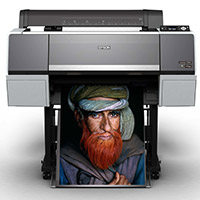Epson’s new large format printers: Blacker than black blacks, easier access, and less ink waste
posted Monday, September 14, 2015 at 10:22 AM EDT
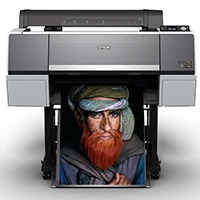
(Well, blacker than the previously very black blacks, anyway...)
Epson has just announced four new Large Format printers to be released in October and that will be displayed for the first time at the Graph Expo, September 13–16 in Chicago.
Of the new printers, the SureColor (SC) P6000 and P7000 are the smaller models (both have a maximum print width of 24"), while the SC P8000 and P9000 are the larger models (both have a 44" width limit in printing). Using roll paper, there is essentially no limit in length. The P6000 and P8000 are 8-color ink printers while the P7000 and P9000 are both 10-color ink printers.
All four models are designed to have smaller footprints, ease access (you don't have to get to the back of the printers to change paper rolls or feed cut sheets), and provide nearly straight-through paper paths, to faciliate handling heavy-gauge sheets up to 1.5mm thick.
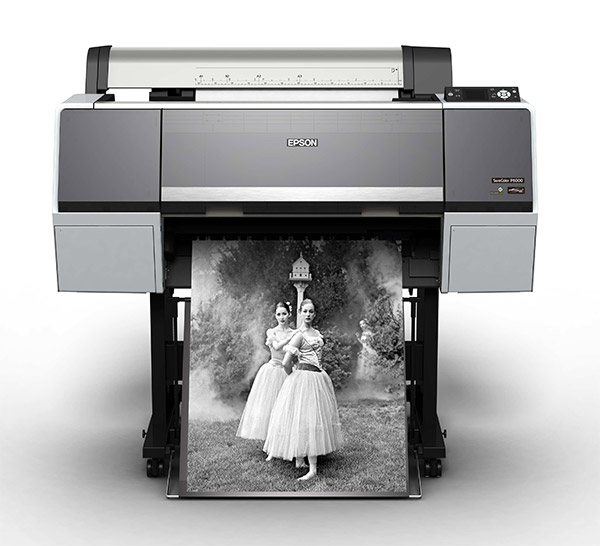
The P6000 and P7000 models have the same dimensions (53.4" (W) x 26.3" (D) x 48" (H), 187 lb.) as do the P8000 and P9000 (73.4" (W) x 26.3" (D) x 48" (H), 256 lb.). These machines are fairly new in all regards and provide new advancements in a variety of areas. In addition, there has been a consolidation of printers across Epson's line, primarily involving the naming of printers in various countries.
The P6000 and P8000 use Epson's current UltraChrome HD inks while the P7000 and P9000 use Epson's new UltraChrome HDX ink.
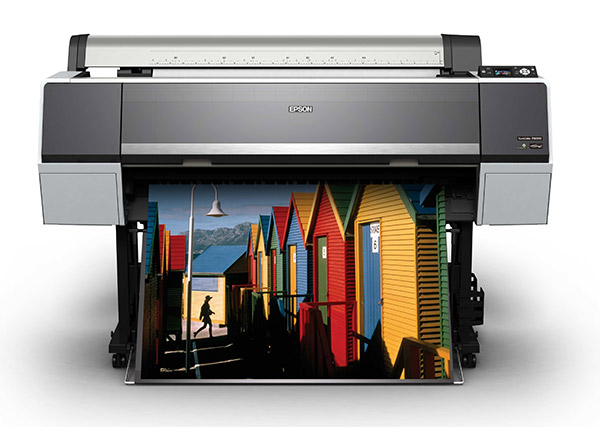
The P6000 and P8000 printers are 8 color printers and are best for graphic designers, commercial printers and photographers, while the P7000 and P9000 have a 10-color ink set and in addition to the afore-mentioned, one can also add fine-art reproduction houses to the list of users.
Also for the P7000 and P9000 printers, Epson provides an alternative Violet ink that shares the same ink stall and can be used instead of the LLK (light-light black) and can be switched as needed. This new Violet ink provides expanded color gamut delivering 99% of the Pantone(R) Formula Guide Solid Coated; something of interest to designers. The Violet ink is not recommended for photos, however. In addition to the LLK there is also LK (light black) and standard K (black) ink. The new HDX black is listed as having 1.5 times the density than in the previous inkset, to provide better contrast and optical clarity. Epson doesn't identify whether this is the Photo Black (PK) or Matte Black (MK) ink that is denser, and they do not identify how this has been calibrated. Epson is known for having very dense blacks so if this is an even blacker black, it must be pretty darn black. (To use a technical term, there. ;-)
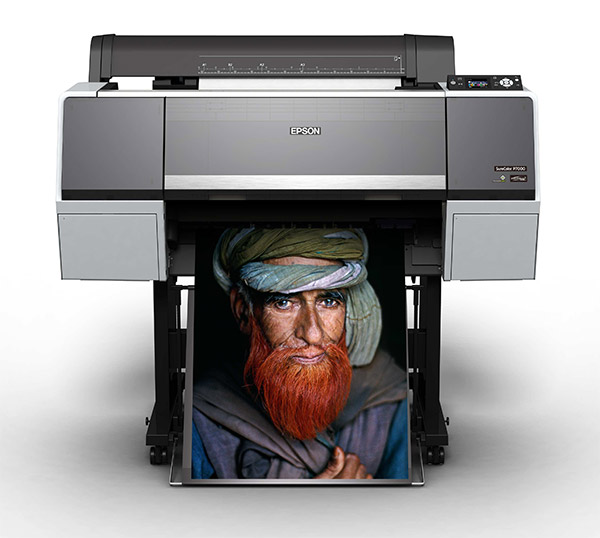
Incidentally, the longevity of the HDX inks are calculated to be 200 years for color images and 400 years for black and white images (with the exception of color images on Velvet Fine Art Paper, which is rated for only 150 years). These are all WIR Certified ratings, as determined by Wilhelm Imaging Research.
All inks come in 125 ml, 350ml, and 700 ml sized cartridge capacities. (You don't want to leave inkjet ink sitting unused in cartridges for too long; you should determine the size of the cartridges based on your usage. Epson doubtless has a specific recommendation for their products, but we'd say in general that it's a good idea to cycle inkjet ink through within a 6-month time frame.)
Epson provides a variety of additional features (in a package called the Commercial Edition) for the P7000 and P9000. To verify the accuracy of your color, you can add the Epson SpectroProofer(R) UVS in-line spectrophotometer (developed jointly with X-Rite) that provides automated color management for proofing your work in progress. In addition, another option is an internal 320GB Print Server. This allows you to free-up workstations, add extra images to print queues, as well as to save jobs (in general) or save images for later multiple-print jobs.
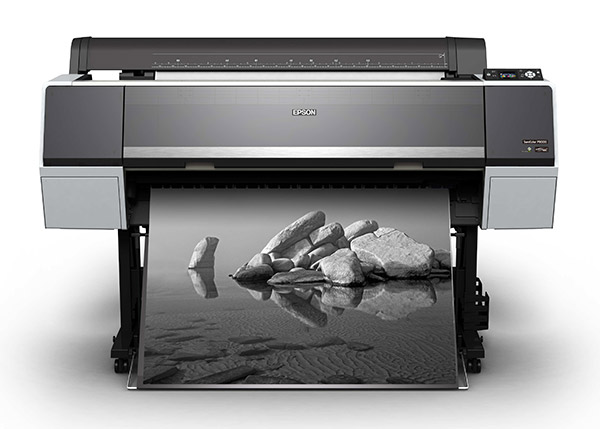
All machines can use either roll or cut-sheet media from photographic paper to 1.5mm fine art media or poster board. When using cut-sheet media, all machines provide automatic alignment and paper skew checking. One of the features for roll media is that the printer will lay down a scannablebar code on each roll as it's unloaded, that is automatically read by the printer when you load it back in. Usage data for each roll is monitored, so the printer can let you know if there's not enough paper in that roll for your current print job. All machines provide a built-in paper cutter for roll paper.
One of the common problems with all ink jet printers is if the printer is not used on a sufficiently frequent basis, the ink may dry up in the heads causing a loss of time and ink for the then-required head cleaning. To solve this, Epson now provides automatic "tests" that are done on a scheduled basis (6 to 60 hours). These use a minimal amount of ink and insures that your printer is ready to print when you are. Most large-format inkjet printers that we're aware of have a periodic cleaning cycle, waking up every now and then to flush a little ink through the heads to keep them clog-free. From the way Epson described the automatic tests on these new models, though, it sounded like only enough ink is used to verify that the nozzles in fact aren't clogged, and then only cleans the heads that need it. (The heads are apparently handled in pairs for these operations.) We can state from our own experience that it can be quite expensive just paying for the ink to keep a wide-format printer operational. For infrequent users, a significant reduction in that cost would be very welcome.
The print heads are the same for all machines:
- Piezo-based with 8-channels, with 360 nozzles/inch.
- New ink repellent surface coating for reduced nozzle clogging.
- Capable of printing up to 2,880 x 1,440 dpi
- Variable sized droplet technology as small as 3.6 picoliters
- Automatic or user-prompted switching from Photo to Matte Black
The one very curious limitation from the data that we were provided is that while you can output to these printers via gigabyte Ethernet or from jobs stored on the internal hard drive, you also have the option to do so via USB 2.0. The USB 2.0 limitation very curious since USB 3.0 is not all that new and if Epson wishes to help transfer data as fast as possible from the workstation to the printer, the USB 2.0 wouldn't seem to help.
All printers carry an automatic 1 year warranty (that includes toll-free advanced telephone support Monday - Friday) and may also provide on-site service if there are hardware issues. At any time during the warranty period, the user may elect to purchase an additional one or two years.
You can view more information about Epson's new large format printers, including pricing, over on their website.
